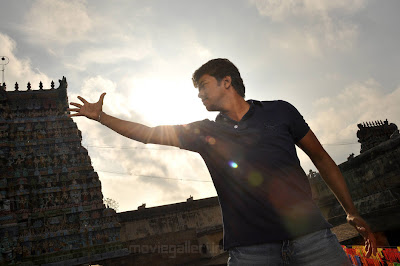M: Pattamboochi kupidum podhu Poovae Oodathae
F: Kadhal thenai sapidum podhu pesa kudathae
M: Pattamboochi kupidum podhu Poovae Oodathae
F: Kadhal thenai sapidum podhu pesa kudathae
M: Yannai Thanthathi silai neeyae
Yerum thagathin vilai neeyae
F: Kadhal Vcyae Malai neeyae
Ennai Katti Iluthayae
M: Pattamboochi kupidum podhu Poovae Oodathae
F: Kadhal thenai sapidum podhu pesa kudathae
F: Yaedhai tharuvathu thaan endru
Yaedhai peruvathu thaan endru
Kurukum netukum kuzhandi pola idhyam kudthi Ooda
M: Thalai asaikuthu un kangal
Thavi thavikuthu En nejam
Our thee pola oru thi vanthu
Uyirai Panthada
F: Nayabagam Un Nayabagam
Athu mudiyatha mudhalagum
M: Pumugam un pumugam a
Adhu mudiyatha mudhalpagam
F: Pen Kavidhai Ival thanae
Un Idhalal padipaiyo
Kan imaiyal ennai mari kadhal thirapaiyo
M: Pattamboochi kupidum podhu Poovae Oodathae
F: Kadhal thenai sapidum podhu pesa kudathae
M: Alai Varisail ne sirikka
Tholai thodarbinil naan irukka
Udhadum Udhadum pesum podhu ulagai maranthaenae
F: Unadhu aruginil Naan irkkua
Uyir kuzhathil po pokka
Irandanam murai Idhayam thudika medum piranthaenae
M: Malaiyil Pon Malaiyil
Un Madi Meedu vizhuvanae
F: Marbinil un Marbinil
Naan marudhani mazhai thanae
M: Vin nilanu thodum thuram
Pen nilanu thodum thuram
Un mazhail ninaithandalae Kaichal parandhodum
M: Pattamboochi kupidum podhu Poovae Oodathae
F: Kadhal thenai sapidum podhu pesa kudathae
M: Yannai Thanthathi silai neeyae
Yerum thagathin vilai neeyae
F: Kadhal Vcyae Malai neeyae
Ennai Katti Iluthayae
Vinnai Kappan Oruvan :
M: Vinnai Kappan Oruvan
Mannai Kappan Oruvan
Unnai Ennai Kakum Avanae Avanae Iraivan
Mannai Kappan Oruvan
Unnai Ennai Kakum Avanae Avanae Iraivan
Endha Ooril Illada Ellai Samy
Ne Sadhi Illai Enabuthu thanae nalla samy
Ammai appan mattumae aadhi samy
Ada Attam Unnai Enna alla adikamy
Vinnai Kappan Oruvan
Mannai Kappan Oruvan
Unnai Ennai Kakum Avanae Avanae Iraivan
Earu Munnareu Eeru
Peru Varum Peru Peru
Ooru yathum ingae namma ooru
Podu Ennodu podu
Kudu Anbodu kudu
Vazhil vandhu pogam pallam medu
Edu da melatha,thalatha,thevatha
Inimale thaan Vithai
Mottha kuttatha Kutti thaan kondadu
F: Namma sonthatha pangthatha Nengathathae
thirunaalil kattil onna uravadu alapodu vilayadu
M: Aalalagandane aathathuku Mannanae
Anandha thandavam aaduvomae
Vinnai Kappan Oruvan
Mannai Kappan Oruvan
Unnai Ennai Kakum Avanae Avanae Iraivan
F: Vinnai Kappan Oruvan
Mannai Kappan Oruvan
Unnai Ennai Kakum Avanae Avanae Iraivan
Yaru ila nengil yaru
Kuru avan kadhil kuru
Radhai mandhu sonnadhu ellam Kannan Peru
M: Ooru thirunallil ooru
Odum thiruvathur thaeru
Aata bali ketathu illa Ayyanarru!!!
Anbin vazhi ondru,Mozhi ondru Engana
Ulagu ellam Odru
Vetri kodi Kattu Munnalae
Aacham Vilagatum Vilagatum araiettum
Athai thukui podu
Veeram vilayaatum vilayaatum mannmaelae
Naan Pattu padunga
Nadu allum adu Na
F: Nalla Seithi yaru sonnalum Kaetu ko Na !!!!
M: Vinnai Kappan Oruvan
Mannai Kappan Oruvan
Unnai Ennai Kakum Avanae Avanae Iraivan
Endha Ooril Illada Ellai Samy
Ne Sadhi Illai Enabuthu thanae nalla samy
Ammai appan mattumae aadhi samy
Ada Attam Unnai Enna alla adikamy
Step step :
M: Step Step Step it up
Ilamai Alaikudhu step it up
Idhayam parakudhu step it up
Step Step Step it up
Unnul Minnal wake it up
Ucham varaikum Keep it Up
Step it up
Utru paar ulagin ellam azhagin naatiyam
Uyirukul adhuvae inba theeyai mutidum
Unnai Ne Maranthae Adu
Moctham Sathiyam
Oh..Huu..1,2,3,4
Yem ma mo yemmamo
5,6,7,8
Yem ma mo yemmamo
Step Step Step it up
Ilamai Alaikudhu step it up
Idhayam parakudhu step it up
F: Kaasuku Musiqku looseaha potukka
Natpaga yarodum sera maruthutha
Ip podhu vin mutta Pudhusaga Elzunthuta
thonuthu Kai thata Ada da Asaithi ta
M: Attril aadum meen adi
Kattil thullum Maan adi
Engum edhilum Naan Ready Paaradi
F: Pudhu Vaesham
Pudhu Vegam
Pudhthithana Aaaluthaan
M: 1,2,3,4
Yem ma mo yemmamo
5,6,7,8
Yem ma mo yemmamo
F: 1,2,3,4
Yem ma mo yemmamo
5,6,7,8
Yem ma mo yemmamo
M: Step Step Step it up
Ilamai Alaikudhu step it up
Idhayam parakudhu step it up
F: Pakathil sirupulla
Kalakura Payapulla
kili Pengalin Naerupula
Nee thaan Mapilla
M: Yenmandha Aal illa
Naan munna pol illai
Pareandi En attam yarum inai illa
F: Dan dan Unnudan
Athirum kalgal Unnudan
Aadu konjam ennudan ennudan
M: Kai korthu
Mei Serithu
Uyir Puthu Aadalam !!!
1,2,3,4
Yem ma mo yemmamo
5,6,7,8
Yem ma mo yemmamo






























































